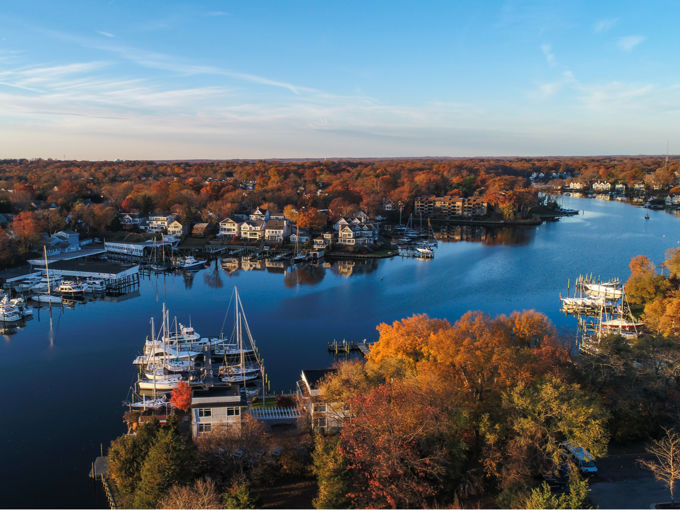
Environmental Law And The Chesapeake Bay Preservation Act: Where Local Knowledge Is A “Must”
Living on the water provides beautiful vistas, opportunities for boating and fishing and other amenities, all of which come with a (sometimes hidden) cost because the waterfront is subject to a complicated web of environmental laws and regulations. Among these, the Chesapeake Bay Preservation Act (found at Virginia code §§ 62.1-44.15:67 to 62.1-44.15:79) is unique in that it is a creature of local government, with minimal state oversight, and no federal role whatsoever. Those with concerns relating to the Act need look no further than their town/city council or local board of supervisors.
Local Knowledge Is Necessary For Success
Due to the predominant influence of local government in this area of environmental law, it is wise to seek representation by an environmental attorney with the experience and local knowledge necessary to develop a successful compliance strategy for a particular project or to provide defense services if authorities have already issued a “show cause” or a “summons” due to an alleged violation.
Adopted in 1988, with significant amendments in 2012 and 2013, the Act, at Virginia code § 62.1-44.15:74, directs towns, cities and counties to determine the boundaries for the Chesapeake Bay Preservation Area within their jurisdiction, determine the measures to be implemented within it to protect the bay, and express those measures in the Comprehensive Plan, the Zoning Ordinance (if applicable) and the Subdivision Ordinance. There are 46 cities and counties and 43 towns that border the tidal waters of the Chesapeake Bay, and each is required by the Act to adopt an individually tailored program.
The Chesapeake Bay Preservation Area delineated by the City of Chesapeake, for example, can be viewed here.
Just as each locality has flexibility to determine the measures to be implemented within the Chesapeake Bay Preservation Area, they have similar flexibility in designing their own bureaucracy to administer the Act. The City of Virginia Beach, for example, has created a Chesapeake Bay Preservation Act Board, with nine members appointed by city council, to oversee the Virginia Beach Chesapeake Bay Preservation Ordinance (the ordinance is Appendix F of the Virginia Beach City Code), and appeals are taken to the Circuit Court. In contrast, the City of Norfolk opted against creating a board and instead relies on city staff to administer its Chesapeake Bay Preservation Act Overlay District Ordinance, with appeals to the Board of Zoning Appeals and then to the Circuit Court (the ordinance is Section 11-2 of the Norfolk City Code).
Determining "RPA" And "RMA"
Once the locality has defined boundaries for its Chesapeake Bay Preservation Area, it must then designate two areas within the Chesapeake Bay Preservation Area known as the “Resource Protection Area” and the “Resource Management Area.”
The Resource Protection Area, or “RPA,” typically is the 100-foot wide strip of land adjoining water bodies that have perennial flow within the Chesapeake Bay Preservation Area. Land disturbance activities within the RPA are tightly controlled. Permits are required for most activities, although some localities allow very minor land disturbances in the RPA without a permit, provided there is proper advance coordination with local authorities. Examples of such minor land disturbance activities may include:
- Vegetation removal to enhance sight lines and vistas
- Construction of access paths
- Construction of recreational area
Higher intensity activities in the RPA, such as demolition of a home or other structure (presumably one that was built prior to adoption of the Act), construction of one or more new structures following such demolition, the addition of a swimming pool, pool house or driveway, or raising the elevation for protection of existing structures, will trigger the comprehensive permit process. The costs associated with this process typically are in the tens of thousands of dollars because the required submissions oftentimes include a site plan, landscape plan, stormwater management plan, erosion and sediment control plan, water quality impact assessment and a performance bond.
A "show cause" or a “summons” typically is issued when land disturbing activities are initiated in the RPA without a permit. The garden variety enforcement actions brought before the CBPA Boards in Hampton Roads include:
- Deck built adjacent to bulkhead
- Removal of all vegetation down to the waterline
-Filling marshy area with soil (to expand the back yard)
- Filling low lying area with construction debris (to leve out the back yard)
- Tree removal
- Tree limbing
- Removal of forest litter and understory plants (the removal is impermissible; replacing the leaves and understory plants in the RPA with turf is equally impermissible)
Violations come to the attention of local government authorities most often through citizen complaints but also on occasion as a result of a notification from a state agency or from site or area inspections by local government administrative staff. Wrongdoers may be exposed to a civil penalty of up to $5,000.00 for each day of violation. In some localities, violators may face criminal misdemeanor prosecution. Virginia Beach, for example, allows a fine of $1,000.00 or confinement in jail for 12 months, or both, on conviction, as an alternative to the daily civil penalty (Appendix F, Section 112 of the Virginia Beach City Code).
The RMA is the part of the Chesapeake Bay Preservation Area that is not included in the RPA. A greater range of land disturbing activities are permitted in the RMA, although a permit is normally required, just as permits are for most of the land disturbing activities undertaken in the RPA.
If you need assistance with the use and development of your waterfront property in compliance with applicable environmental requirements, with developing a compliance strategy for a project, or with defense representation because the authorities have commenced an enforcement action against you, please contact Pender & Coward shareholder Jim Lang at (757) 777-6382 or jim@fhp-va.com.
